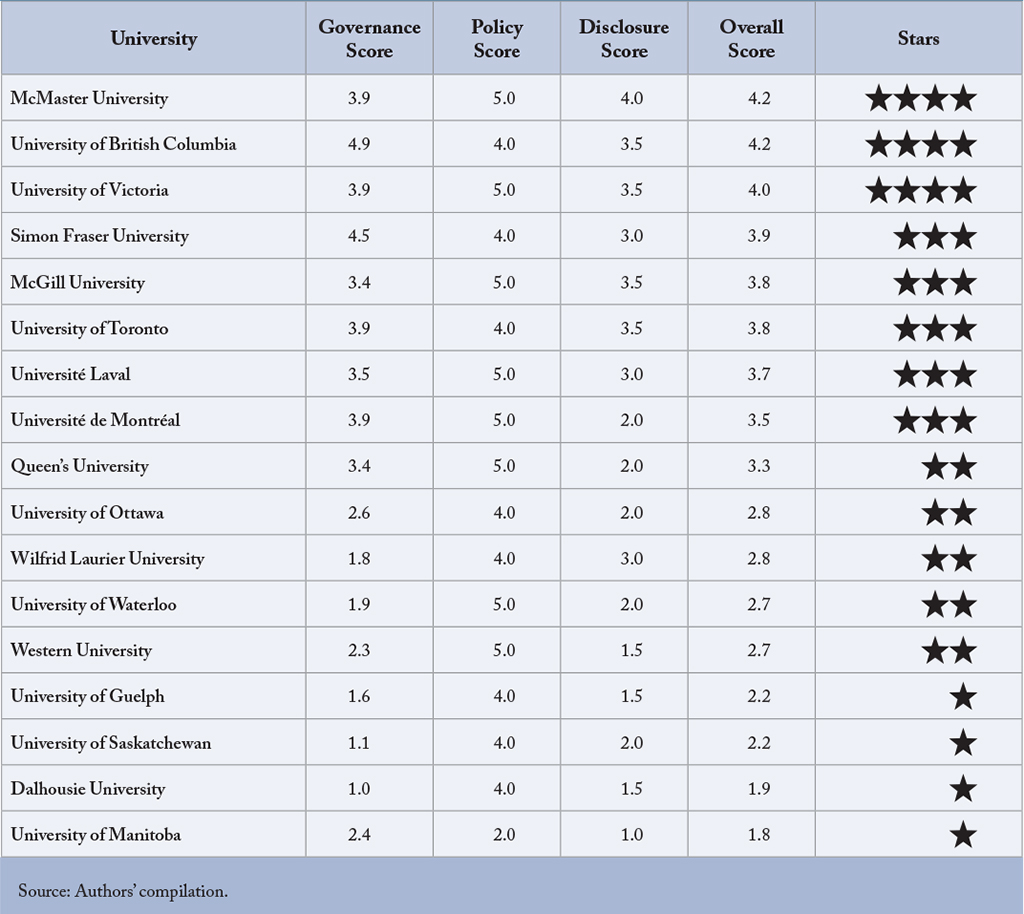To: Canada’s University Foundation Boards
From: Catherine Jackson, Abhishek Kumar and Ramisha Asghar
Date: June 8, 2022
Re: University Endowments Should Walk the Talk
Canadian universities are world renowned for their leadership in research and education. Many undertake research efforts and teach students about the risks and opportunities associated with climate change.
Most have also embraced a transition to lower the carbon footprint across their operations. However, universities could do more to align their investment philosophies with their leadership in research, education and operations.
Our recent C.D. Howe Institute paper evaluates the governance, policy and disclosure practices of 17 Canadian university endowment funds that made commitments to manage their assets while taking climate change into consideration. We ranked each endowment on its performance across these three categories as well arriving at an overall score.
Endowment funds are comprised of charitable donations and related investment income held in trust for specific funding projects. Alongside student tuition fees and public funds received from federal and provincial governments, they provide the majority of funding for universities to operationalize their objectives.
Endowment governance is ultimately overseen by a university’s governing board; endowment policies are implemented by university executives. Most universities and their endowments consider environmental, social and governance (ESG) factors in their investment policy statements, although many do not reference climate change expressly.
McGill University is the only one of the 17 signatory institutions that includes climate-related targets in its investment policy.
In aggregate, Canadian endowments invest billions of dollars. The University of Toronto, has the largest, with assets of $3.15 billion at April 30, 2021, generating 4.9 percent of operating revenues from its endowment income during that fiscal year. The second-largest endowment, that of the University of British Columbia, with assets of $2.0 billion at March 31, 2021, generated 4.4 percent of operating revenues from investment income.
On aggregate, our research found that university endowments are at various stages of progress in their sustainability journeys. McMaster University and the University of British Columbia were tied for the highest ranking followed by University of Victoria, Simon Fraser University, McGill University and University of Toronto. No university received top marks, or five stars.
We offer five recommendations aimed at encouraging alignment of endowments with their universities and strengthening accountability mechanisms:
- encourage reporting by all Canadian universities and their investment divisions along the lines suggested by the Financial Stability Board’s Task Force on Climate-related Financial Disclosures (TCFD);
- align endowment targets with university sustainability targets;
- report universities’ climate commitments and progress to their respective provinces;
- seek appropriately experienced individuals to serve on university governing bodies; and
- increase focus on responsible investment policies and practices.
We acknowledge that climate change is one risk among many that endowments manage in their investment programs, and that all risks must be managed with an eye to optimizing outcomes, including investment returns.
We also acknowledge that divestment is no panacea, and that carbon footprint-reduction targets must be carefully balanced, particularly as renewable energy technologies require significant amounts of fossil fuels in their production. A compelling business case exists for universities to align their endowment policies and practices with responsible investing frameworks, including climate change. Research shows that these practices correlate with a 6-percent increase in donations, in addition to aligning with the university’s stakeholder interests.
In an environment of shrinking government funding as a percentage of university operating budgets and of universities increasingly turning to private funding through donations to endowments and other sources, it stands to reason that university endowments ought to, at minimum, explore how they can benefit from the recommendations in this report.
The final rankings of each university endowment are included in the table below.

Catherine Jackson, a Principal with Mosaic Governance Advisors Ltd. Abhishek Kumar is a former Analyst with Mosaic Governance Advisers and Ramisha Asghar is a former Research Assistant at the C.D. Howe Institute.
To send a comment or leave feedback, email us at blog@cdhowe.org.
The views expressed here are those of the authors. The C.D. Howe Institute does not take corporate positions on policy matters.





